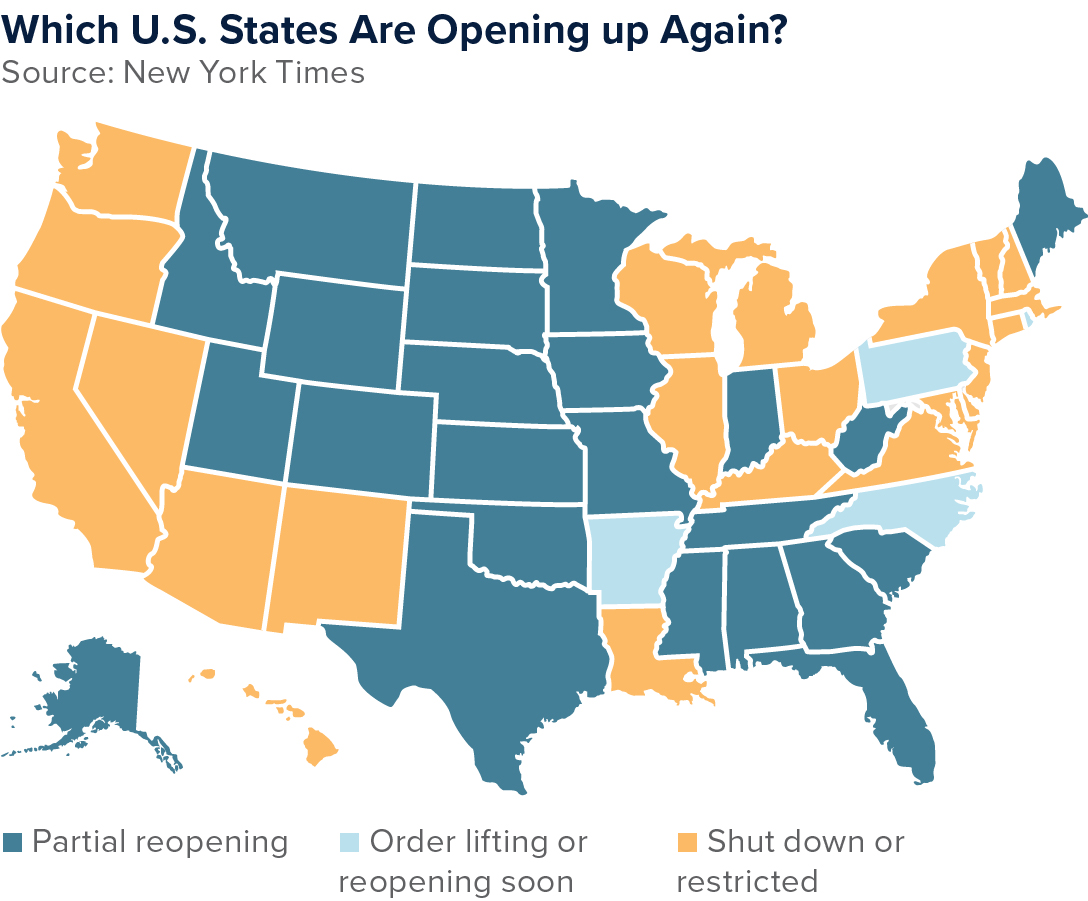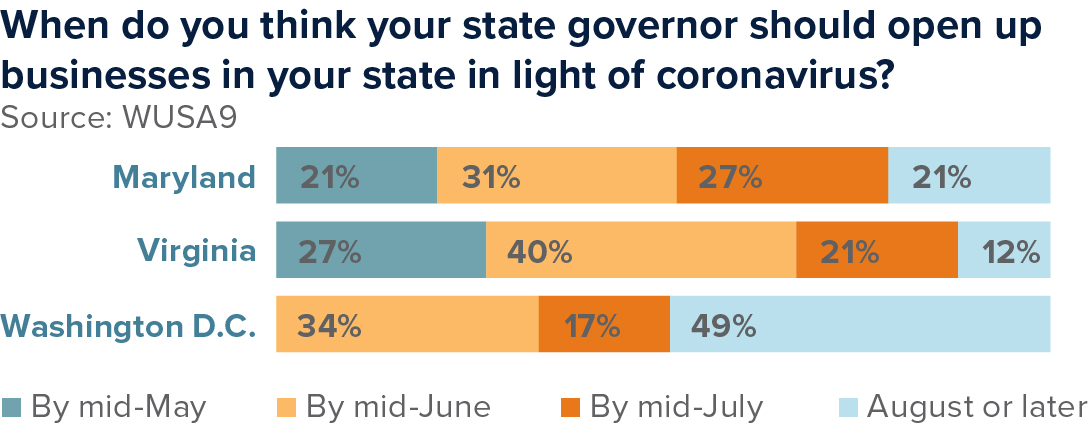As we enter May, some of the largest U.S. retailers are itching to reopen after being forced to close for weeks by state mandates to curb the COVID-19 pandemic. Now, states including Georgia, South Carolina, and Texas are beginning to lift these mandates, and stores will soon be welcoming back customers under particular guidelines. It has become evident that despite the challenges, the simple fact remains—buildings are only valuable if there are people in them. This report will highlight the changes that have taken place in the retail industry and how they will have an everlasting imprint on the market.
Reopening America
As individual states begin reopening businesses, the retail industry has voiced that they need more guidance from governments on uniform reopening procedures and criteria. On May 1st, the Texas governor, Greg Abbott, allowed all retail stores, restaurants, movie theaters, and malls to reopen in phases as long as they maintain a 25% capacity and follow social distancing guidelines. This is the first phase of “Reopening America,” phase two, anticipated to begin May 18th, will expand occupancy to 50%. This comes as much needed news to many retailers who have lost sales and laid off employees as a result of mass social distancing guidelines.
The National Retail Federation and the Retail Industry Leaders Association released a plan that details how stores should reopen in three phases, stopping short of giving specific dates on when each phase would begin.
- Phase 1: Allow e-commerce, contactless curbside pick-up, and in-home delivery
- Phase 2: Reopen stores to the public, with social distancing protocols and reduced occupancy
- Phase 3: Establish protection, then lift all restrictions
The retail sector is prepared to meet this new challenge and give customers confidence in their ability to safely welcome customers back into stores. However, there is no doubt that even under the most optimistic scenarios, American families will be adjusting to a “new normal” for some time to come.
In the coming days, Idaho, Iowa, and Vermont have also made plans to lift closure mandates. As a result, the list of reopened retailers is likely to grow.
It’s not uncommon for a significant disrupter to appear every ten years, but how retailers react is going to pave the way for the future. Retailers who adjust and adapt to this new reality will succeed and shift the industry to a brighter future. The U.S. has almost four to five times the amount of retail square footage compared to Europe. And, one of the things that will naturally happen over the next 10, 15, or 20 years is that the square footage is going to get closer to European square footage. This is going to weed out tenants that are unable to keep up with changing consumer times.
The New Normal
While grocery stores have remained open and fared better than other retail segments, e-commerce grocery sales have accelerated at an unprecedented level. For many customers, it has become more comfortable and safer to purchase online for delivery or contactless pick-up. However, this surge in demand has revealed significant cracks in the system, wait times, and fulfillment rates have been abysmal. So, while more customers are turning to e-commerce, many are seeing it at its worst, and it’s going to take time to maximize efficiencies.
In the past couple of weeks, e-commerce penetration has gone from around 3-4% to approximately 10%, according to Forbes. And, while these gains may return to normalcy, it is also likely that this new normal will feature a much higher e-commerce penetration rate along with continued growth.
How COVID-19 will impact the world of retail is just beginning to be experienced. With long-term social distancing, occupancy restrictions, and less comfortable shopping environments will hasten even further e-commerce adoption. However, consumer confidence is going to take some time to return, and this is what is going to drive the economy back to a healthy place.
Shifts in the Long-Run
It’s essential to look at how companies are set up financially, now, to determine if they are going to be able to pick back up once daily routines return to normalcy. For example, the Fed is currently buying back investment-grade credit bonds, which Walgreens can issue for $2 million, and the Fed will purchase back. Rite Aid, on the other hand, only has junk bonds.
The restaurant industry is preparing for a long, uphill battle predicted to last 12 to 18 months before restaurant demand returns. With takeout and delivery services not providing sustainable revenue, industry leaders expect permanent closure of a large number of restaurants. These closures will come from those that are unable to reopen or are unable to turn a profit once business resumes. With this wave of closings, there will be an increase in the retail vacancy rate and a dynamic shift to favor tenants. However, this will create opportunities for well-positioned restaurants to expand and create less competition.
Post-coronavirus, the retail sector will be shaped by these three factors:
- Consumers will have adopted short-term behaviors that will become permanent.
- Digital Transition
- Germaphobia
- In-Homing
- Brand Loyalty
- Consumers will emerge from the pandemic in a new economic reality, changing consumer purchasing habits dramatically.
- Significant consolidation of retailers will fundamentally alter the competitive and partner landscape.
With the combination of the factors above, retail is undoubtedly going to change. The COVID-19 pandemic has accelerated the inevitable digital distribution of e-commerce. It’s important to have a plan in place to successfully open businesses and adjust to the trends consumers have implemented into their daily routines during the quarantine.
Matthews™ is committed to keeping the commercial real estate community informed and continuing to offer our services during these market changes. With updates and challenges released daily, please contact a Matthews™ specialized agent for guidance during this uncertain time, and for more insights on COVID-19 and CRE, visit our dedicated coronavirus website.
The Centers for Disease Control and Prevention is offering information and updates on the novel coronavirus (COVID-19) outbreak, the World Health Organization is tracking the number and location of confirmed cases of the virus and Building Owners and Managers Association International has provided the following emergency preparedness guidelines for commercial and residential property managers and landlords.












